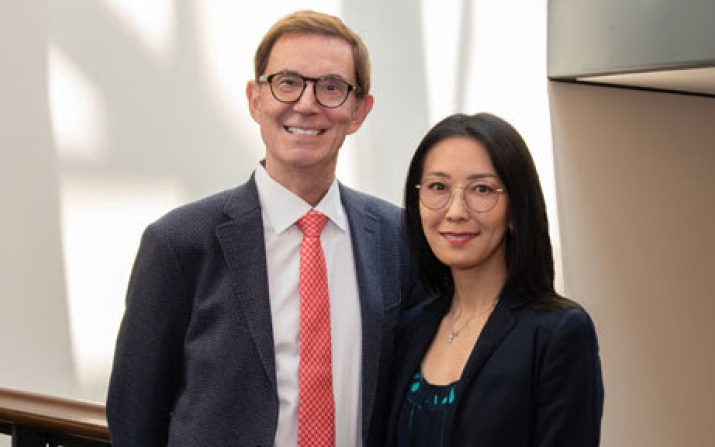Alumnus, entrepreneur commits $25 million to ISEB

Roger E. Susi backs interdisciplinary approach to solving problems with real-world impact
Four years ago alumnus Roger E. Susi committed $2 million to ensure future engineers tackled tangible problems early in their education.
Within months, faculty had launched a pilot program for first-year students. A year later, undergraduates were doing hands-on projects in a new 5,000-square-foot learning lab. And, last fall, the engineering school launched a full-year introductory course to be required for all engineering majors.
“It really worked much faster than I expected,” said Susi, who later endowed a professorship for a faculty member leading the initiative. “That was exceedingly positive.”
So positive, in fact, that when President Eric W. Kaler approached him about supporting an ambitious new research structure on campus, Susi did more than listen—he pledged $25 million to the effort. As part of the commitment, the university matched his gift, catalyzing a $50 million investment.
“This is important to elevate the university to the next level,” Susi said of the 200,000-square-foot Interdisciplinary Science and Engineering Building (ISEB). “Having people in one area, coming from a lot of disciplines, exchanging ideas … I’d like to see my alma mater prosper.”
He’d also like to see the new space help catalyze the kinds of discoveries that make a meaningful difference in people’s lives. Citing the university’s neuroprosthetics research that 60 Minutes featured this spring, Susi hypothesized that new state-of-the-art space could contribute to even broader breakthroughs.
“That’s some pretty cool stuff,” Susi said of the pioneering work that appeared on the CBS news program. Citing other neurological conditions that some face, he added, “maybe there’s a way to affect the brain [beyond] human touch.”
Case Western Reserve President Eric W. Kaler has emphasized that a primary goal of the new structure is to create environments that encourage innovation with real-world impact. While leaders have not made final decisions about specific areas of research that will take place in the building, broad themes such as improving individual health and addressing climate change have begun to emerge.
“Our job is to create, innovate and move breakthrough discoveries to people to make their lives better,” Kaler said. “We want to solve problems.”
Problem-solving has been central to Susi’s life since he was a young boy taking apart and repairing items ranging from radios to a grandfather clock. This tinkering spirit eventually led him to the Case Institute of Technology, where he majored in biomedical engineering. He’s since translated those talents and lessons to two enormously successful medical start-ups: InVivo Research Inc., which launched the world’s first successful MRI patient vital signs monitoring device and, more recently, Iradimed, known for its MRI infusion pump.
Royal Philips acquired the former in 2007, but Susi’s retirement proved short-lived. He soon found himself again tinkering in a garage—this time with a couple of family members. Before long, he created a new company, Iradimed; last month, Forbes magazine named it among the nation’s top 100 small companies.
